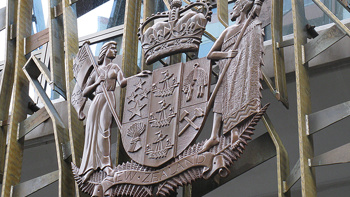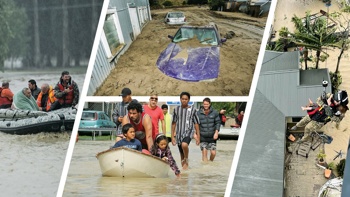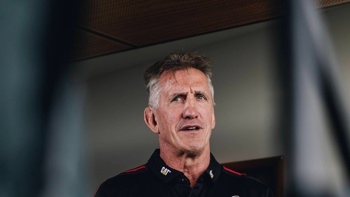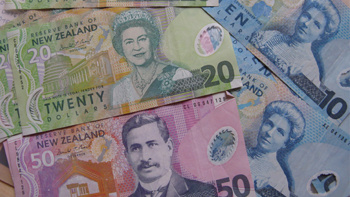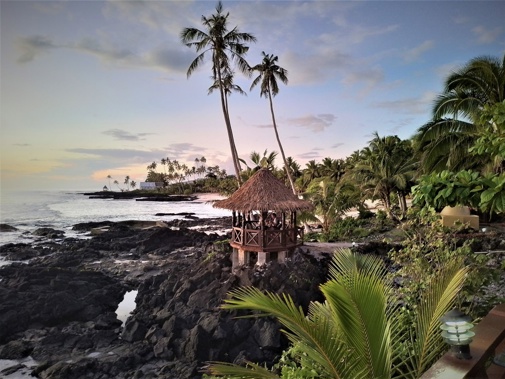
Richly blessed with white-sand beaches, crystal-clear freshwater pools, vivid coral reefs, plunging waterfalls, dramatic volcanic features and ravishing rainforest, Samoa ticks so many holiday boxes. Add to that, its charmingly friendly, wide-smiled people. As one of the larger island nations of the South Pacific, Samoa’s great advantage is its expansive space. Even when the hotels are full to the brim, you’ll relish its sweeping sense of uncrowded glory.
I’m just back from my first foray to Samoa and I fast fell in love with the place. My brother-in-law is Samoan and has been urging me to experience his homeland for years. With Covid in the rear-view mirror, I finally jetted my way there and Samoa certainly seduced me. As one of the oldest civilisations in the South Pacific -- spanning 3,000 years, it’s easy to see why Samoa considers itself the Cradle of Polynesia. Samoan culture is a fusion of its ancient tribal roots and the introduction of Christianity by missionaries in 1830. The architectural prowess of Samoa’s churches is as staggering as their sheer ubiquitousness. They are everywhere, proudly reaching for the sky in the smallest of villages.
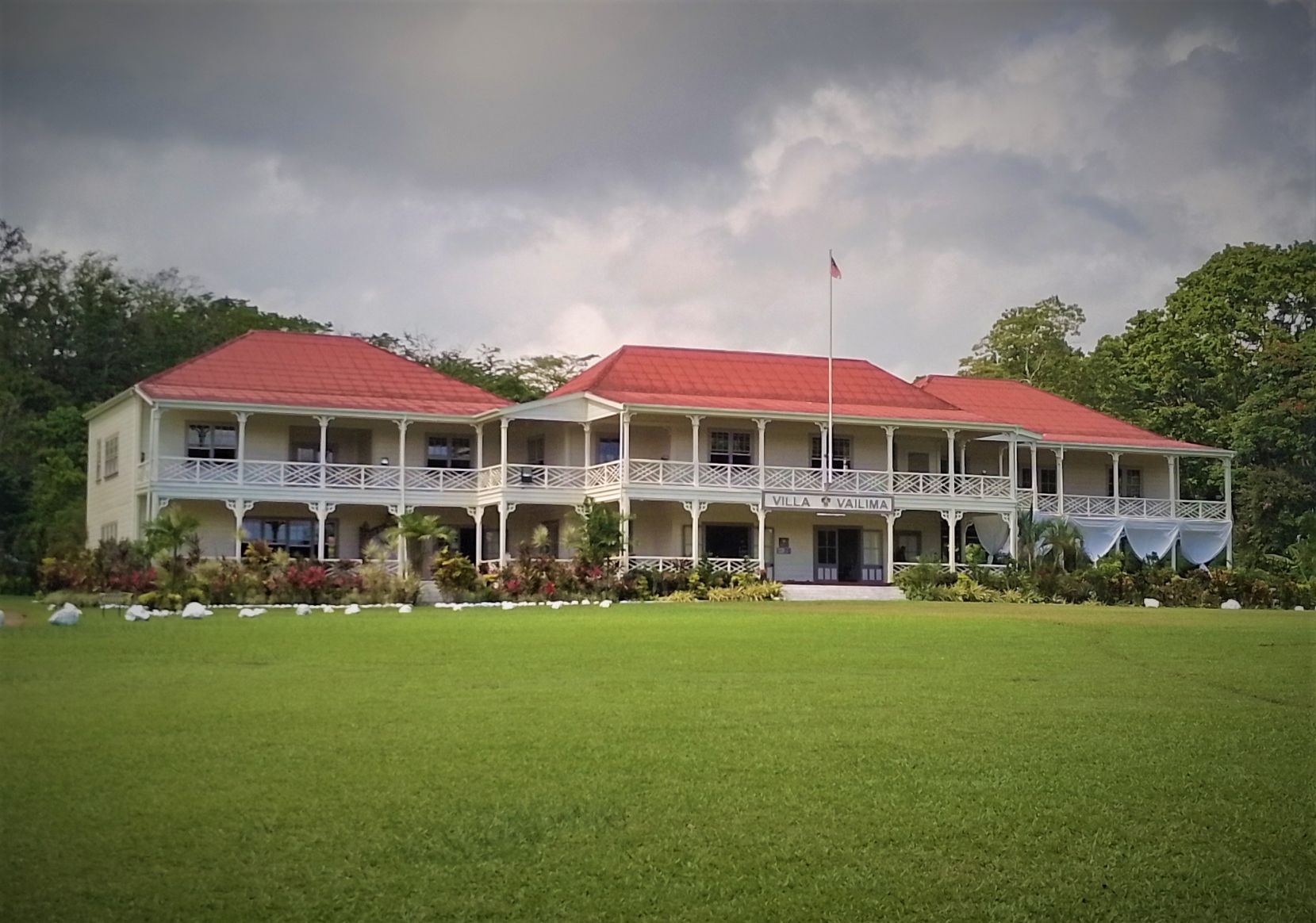
While in Upolu, my convivial guide, Logo, led me into Apia’s extraordinary Catholic Cathedral. The Immaculate Conception of Mary Cathedral was first built in 1857, suffering massive damage in the 2009 earthquake. Rebuilt on site, the new cathedral is much grander. about twice the size and sits several metres higher on elevated foundations. While the overall structure and interior aspects – the Roman-style columns, stained glass windows, marble floors all recognisably reference traditional European churches, many details are beautifully Samoan.
Beyond its striking domed exterior, the interior transports you to another world with its irresistible architectural beauty and a decor that ingeniously blends Samoan culture and Catholicism. I soaked up the splendour of the icons, paintings, marble floors, carvings and stained-glass windows. Best of all is the entire wooden ceiling, carved with patterns of pe’a (Samoan tattoo) and a fantastic Samoan version of the Last Supper is painted around the main dome. It pays homage to an ‘ava ceremony, in which the disciples give thanks to God, as they share a ceremonial cup of ‘ava. It’s a show-stopping church.
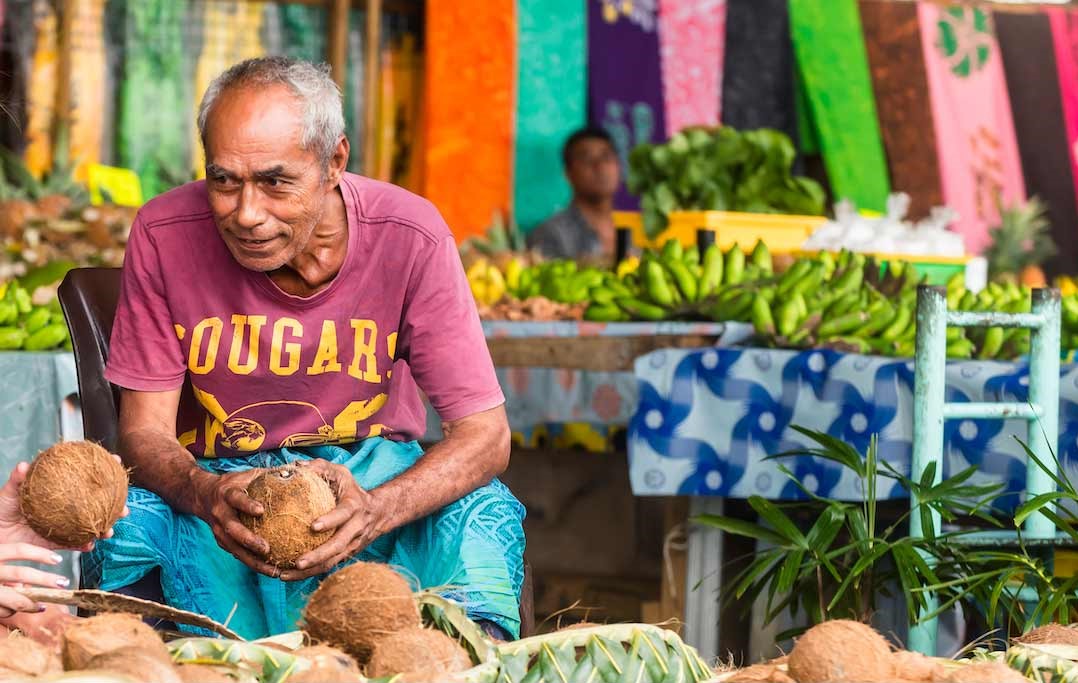
Nearby, pop into the daily Fugalei Market, ablaze with tropical fruits and vegetables, in addition to the wonderful craft market. Local specialties include breadfruit, taro, yams, bananas and Otaheite apples. Logo urged me to try keke pua'a, a delicious Samoan version of bao buns, stuffed with beef and chicken. Stellar street food!
Speaking of food, a culinary institution in Apia is Paddles Restaurant, owned by the Rossi family. With a father from Italy and a mother from Samoa, it's truly a marriage of cuisines. Giovanni Rossi, the son, was in command on the night I dined at this award-winning venue, with a ringside sat on a fireball sunset. I highly recommend a Calamari starter and the Seafood Risotto.
Close to the capital, the Robert Louis Stevenson Museum is a heart-stealer. The celebrated author of "Treasure Island," "Kidnapped" and "Dr. Jekyll and Mr. Hyde," spent his final years in Samoa. After travelling throughout the South Pacific to combat his chronic lung issues, Stevenson moved his family to Samoa in 1889, where he died four years later. While the move might not have been good for his piano (it needed to be kept in a glass case to combat humidity), Stevenson adored Samoa and enjoyed his local name Tusitala (or Teller of Tales). His former residence, Villa Vailima, has been beautifully restored, now sporting a creamy paint job after originally being painted peacock blue. Swaddled in expansive gardens, the museum opened on the centenary of his death in 1994, loaded with personal artifacts. The guided tours are conducted by passionate local story-tellers that Stevenson would be proud of. I loved the Smoking room, papered in a gorgeous copy of the original siapo (tapa cloth) wallpaper that Stevenson commissioned.
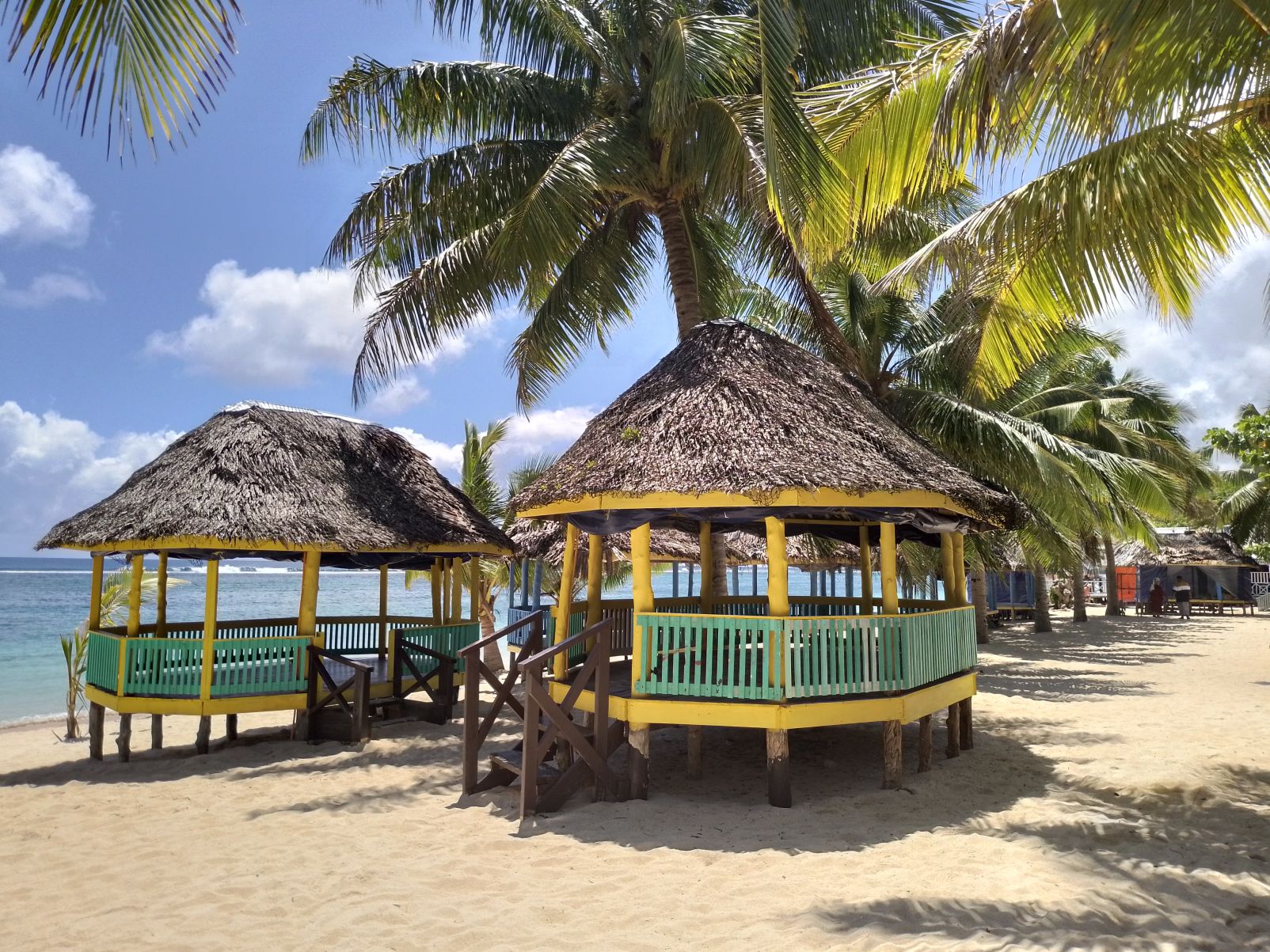
Curiously, the room features a fireplace which he installed simply to remind him of his Scottish home. The author’s magnificent library and bedroom brim with some of his favourite books and original editions of his works. Gazing out the sublime tropical foliage edging the breezy balcony, I was struck by the moving account of how villagers and estate workers formed a human chain to cart Stevenson's body up to the summit of Mount Vaea, for burial. His wife Fanny is also buried there, on the plateau just beneath the summit. You can walk up to the gravesite, but do it early morning before the heat zaps your stamina.
Wherever you drive across Upolu, the colour and charisma of the villages is a retina-burning spectacle, flanked by thriving taro plantations, blazing hibiscus and teuila flowers, dense bush and coconut palms. Fun fact: there are 362 villages in Samoa and 1800 matais. I love how most houses (fale palagi) are adorned in a two-toned paint job that span the colour spectrum. Yellow and blue, pink and green, red and grey, orange and brown….there is no uniformity to the carnival-like colour scheme.
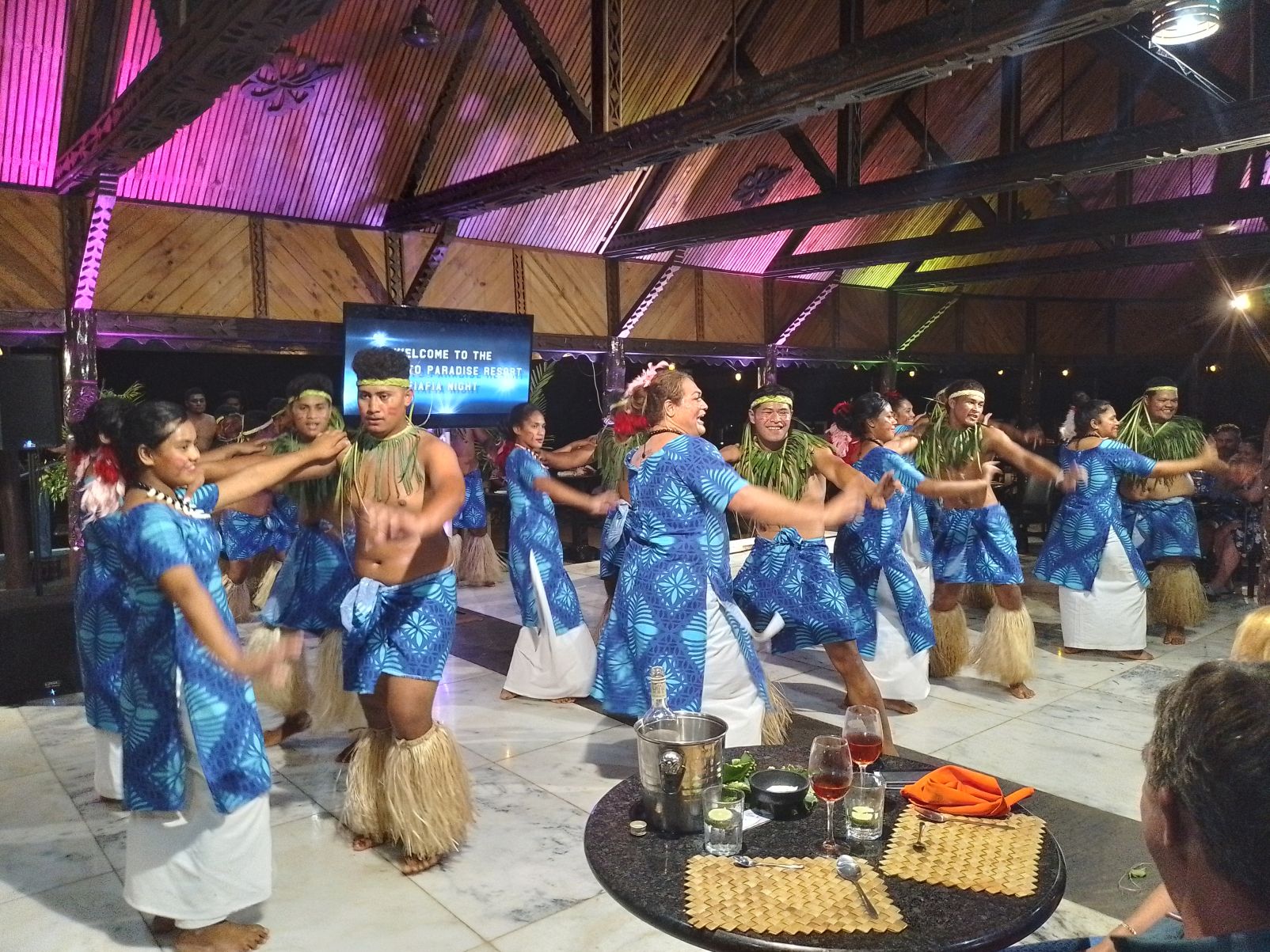
Then there is the repurposing of car tyres and fuel drums, repainted and reused as eye-catching roadside pot plant holders. Samoans were quite possibly early adapters to upcycling. In front of the English-style houses, traditional open-air fale, lined with columns and crowned with a thatched roof. As I passed by a village, they were always humming with family activity. A friendly wave and flash of a smile were always forthcoming. Then there are the gravestones adorning the family burial plots out front - some are temple-like and pyramidal in appearance.
Deserving prime placement on the sightseeing list, To Sua Ocean Trench is one of the more unusual places to swim on the planet. This 30-metre deep, almost perfectly symmetrical swimming hole is cloaked by lush vegetation, dripping down the edges of the trench. It sits in the middle of a lava field near Lotofaga village, edging the spectacular south coast of Upolo.
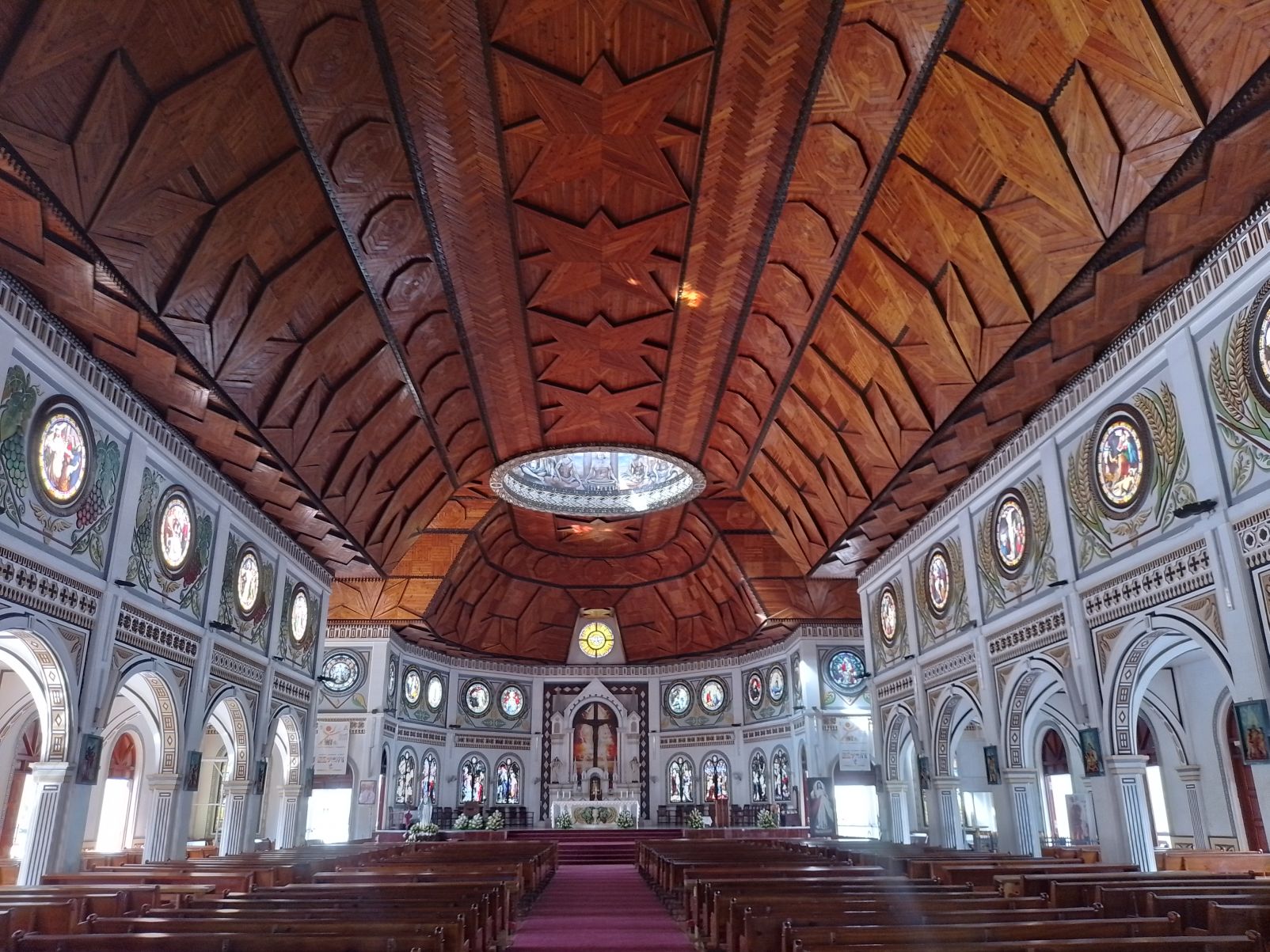
The only access into the pool’s sparkling emerald green waters is via a single ladder with a small sitting/viewing platform at its base. Yet despite its incredible depth and size, To Sua is hard to see as you approach across the parkland surrounding it. This enormous crater-like swimming hole formed during an ancient lava eruption when the land around it slipped away. To Sua is filled with seawater and is connected to the ocean by an underwater cave. The pool is fed by a series of canals and tunnels with water from the pounding ocean, just metres away.
Accessing the pool is not for the faint-hearted. I had to call on my deepest reserves of intestinal fortitude to take the long climb down the narrow ladder, but after maintaining three points of contact at all times, you are instantly rewarded at the bottom. The emerald water is as clear as cellophane and tropical fish dash about. Another frisson is the strength of the tidal surge. It’s so strong a rope has been suspended midway across the swimming hole to hold onto, so you’re not sucked into the underwater tunnels fed by the pounding surf. It’s a compelling experience.
Head inland and you'll encounter majestic waterfalls tumbling past jungle vegetation straight out of Raiders of the Lost Ark. Two of my favourites were Togitogiga Waterfall, which cascades into a refreshingly chilled swimming hole, beloved by Samoa’s great warriors of the past. Also in Lotofaga village, Sopo’aga Fall, a Disney-like curtain of water, with a 50 metre drop, plunging off a volcanic ledge thickly wrapped in dense jungle. It’s a visual symphony.
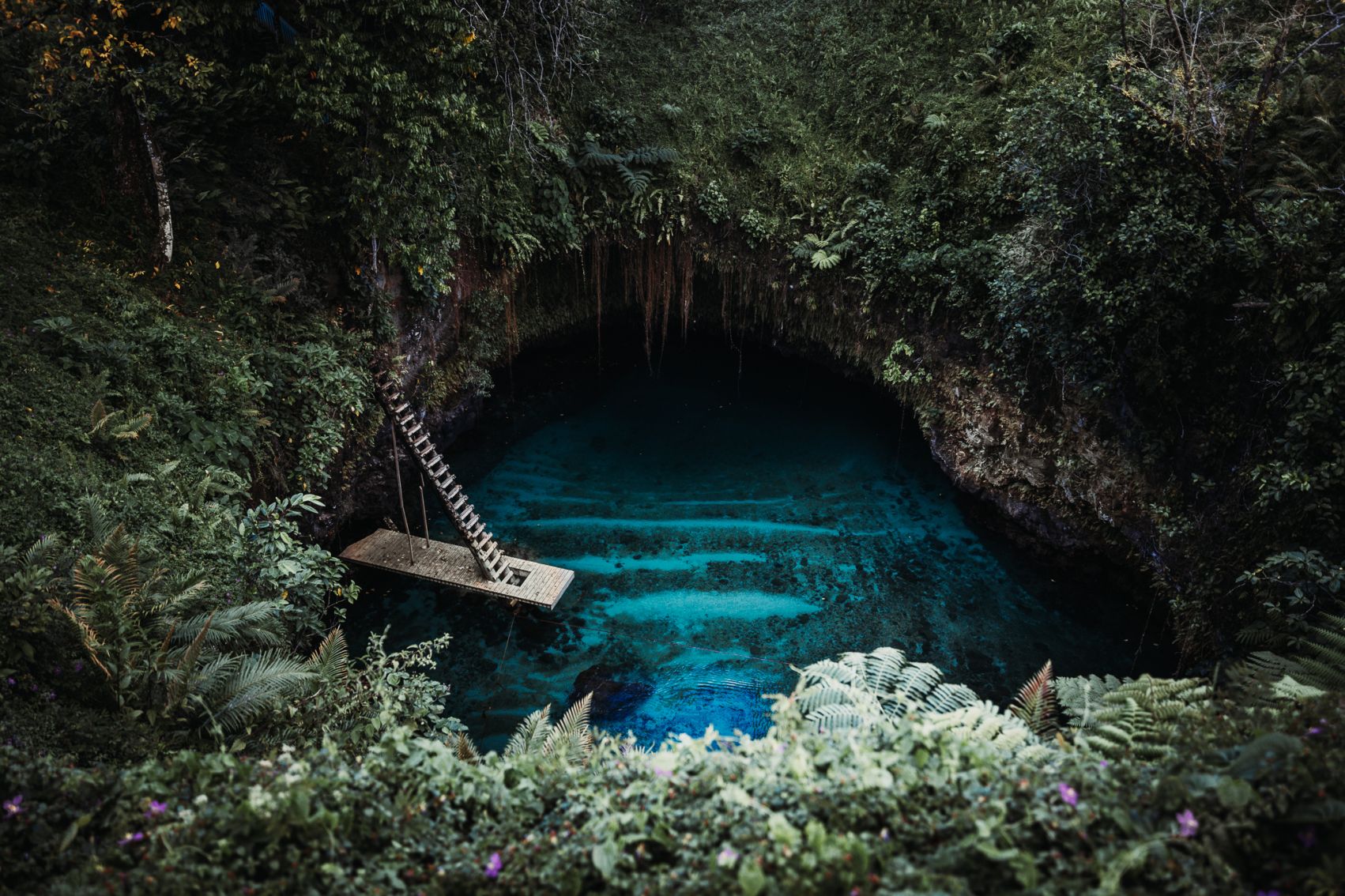
Also on the South Coast, I lapped up the silky white sands and iridescent water, fringed by waving palms. Beach-hopping highlights include Vavau Beach, headlined a sheltered inlet at one end and a perfect row of coconut palms. Further along the coast, the Samoan beach babe of global acclaim, Lalomanu Beach. Whether you’re hankering a spot of snorkelling, sea kayaking or sunbathing, this long strip of pristine white sand, shaded by leaning palms and dotted with merrily-painted day fales really is lounging in excelsis. It’s your quintessential South Pacific beach. I can testify the snorkelling opportunities are splendid. Sea turtles and techni-coloured reef fish are plentiful; you’ll likely giant clams, stingrays and puffer fish just a few metres from the shoreline.
The south coast is sprinkled with some of the nicest and most authentic boutique beach resorts in the South Pacific. Small in size, there’s an endearing sense of soul about them. A star specimen is undoubtedly Return to Paradise Resort, the only fully owned and operated Samoan resort. The site was made famous in the 1951 Gary Cooper film based on the James Michener novel, Return to Paradise, and there’s a fabulous gallery of historic photos of the movie being shot on-location, in the Poolside Cabana café. You’ll feel like you’re staying with long-lost family and the hilarious daily letter from Aunty Pisupo is worth waking up for. The setting is as dreamy as reality gets, while the indulgent on-site amenities cover all bases. You could not wish for a more convivial, outgoing and personable bunch of staff who exemplify the very best of Samoan hospitality. The Rock Pool Bar not just serves excellent libations, but all-day dining.
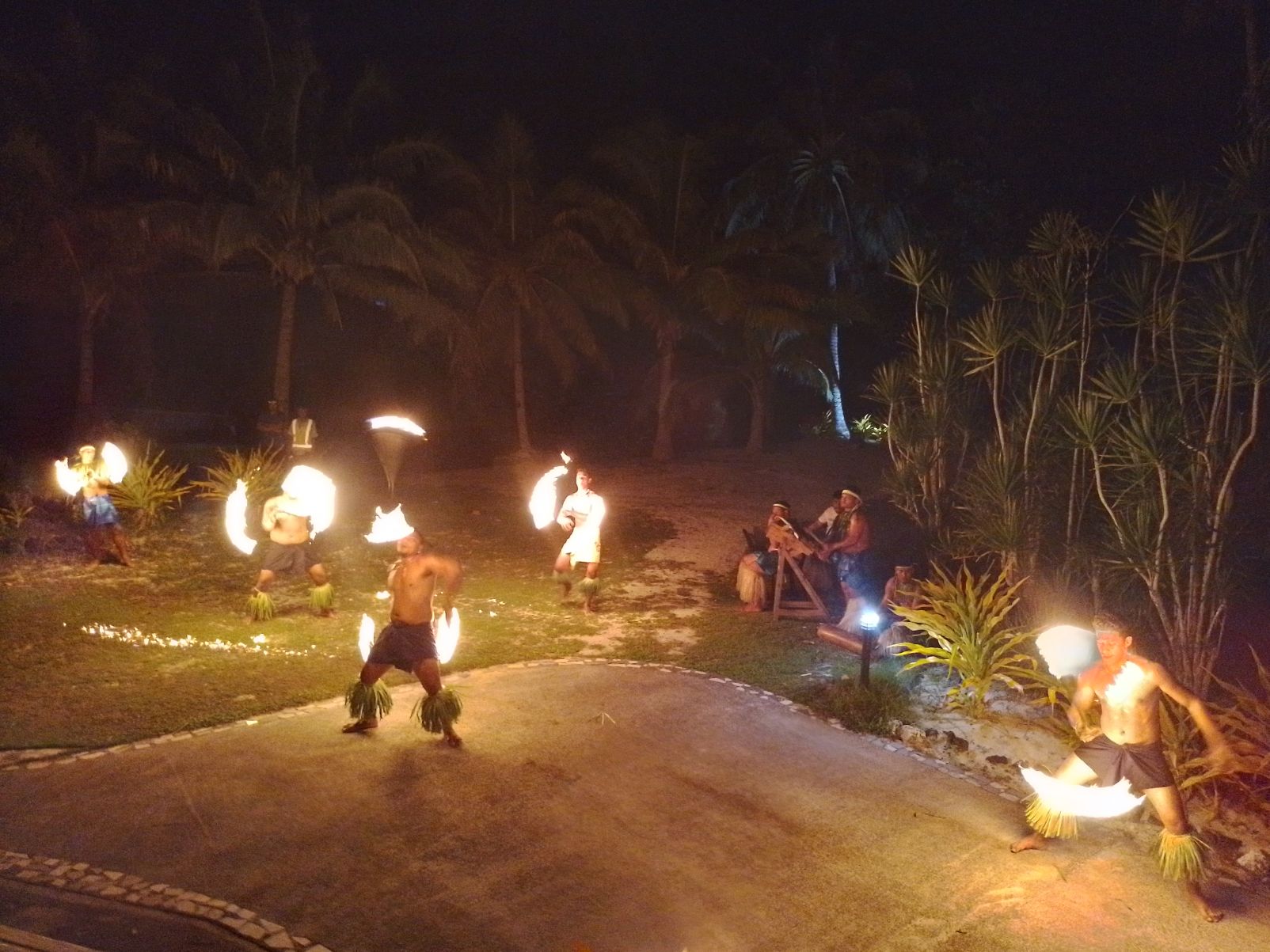
It’s a head-turning venue with elevated dining perches, artfully strung along the jet black volcanic rocks that form small pools, where ocean water surges. Raz and his chirpy crew whipped me an experimental tropical cocktail called New Edition. I was a very happy guinea pig. I grazed heartily on the freshly-caught tuna, exquisitely presented in a variety of forms, including as a poke dish and the Samoan signature raw dish, ‘oka. Similar to ceviche, the tuna is marinated with lemon juice and coconut cream, and sprinkled with diced cucumber and tomato. Divine! If you’re staying in-house on Wednesday, do not miss Fiafia cultural night.
The Return to Paradise edition is an exhilarating cultural show, performed by the resort’s award-winning staff who just a few months ago swept the field to win the National Championships. Starting with an ‘ava ceremony and climaxing with the intoxicating siva afi or fire knife dance, it’s a tub-thumping, body slapping but equally graceful encounter with the radiant colour and passion of Samoan cultural performance. A lavish buffet dinner accompanies the performance, where I feasted on a catalogue of Samoan delights like palusami. (Young taro leaves mixed with meat or prawns, coconut cream and onion.) It’s an irrepressible experience at Return to Paradise Resort, a true Samoan hospitality jewel.
From chasing waterfalls, snorkelling with Nemo and hiking the rainforest, to savouring the rich heritage and culture of the Samoan people, beautiful is back. Less than four hours from Auckland, make tracks to Samoa for a pitch-perfect holiday and create special memories to last a lifetime. www.samoa.travel
Mike Yardley is our resident traveller on Jack Tame Saturday Mornings.
Take your Radio, Podcasts and Music with you






